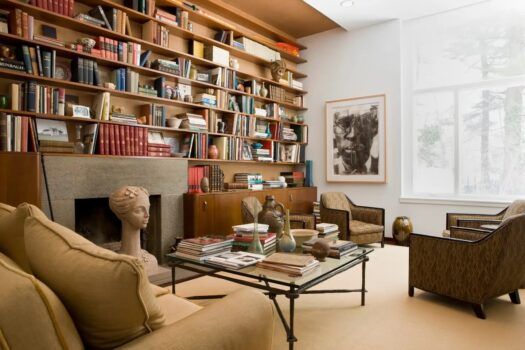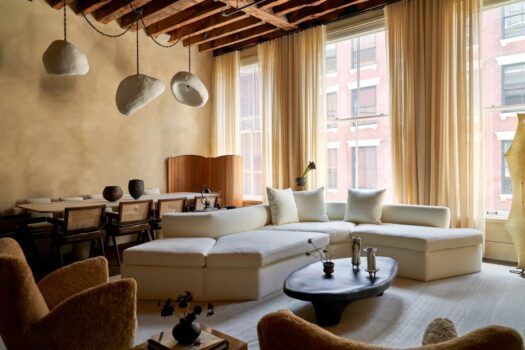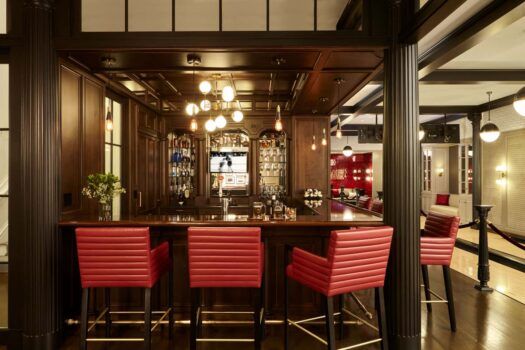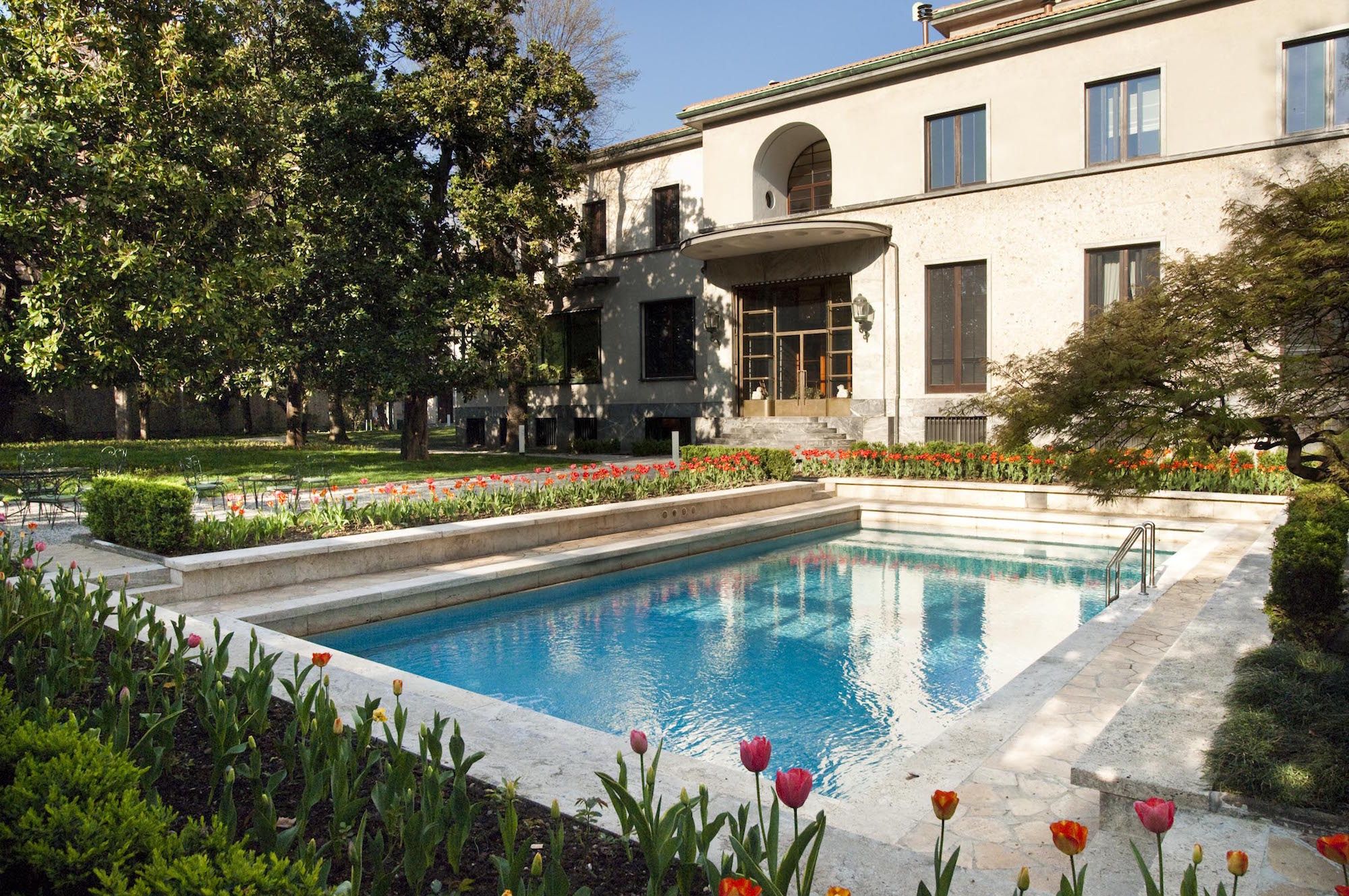
The pool and exterior of Villa Necchi Campiglio in Milan. Photo by Giorgio Majno, © FAI — Fondo Ambiente Italiano
Discreetly situated in the center of Milan is Villa Necchi Campiglio, whose rationalist architecture has long served as a refreshing intermezzo amid the city’s fashionable hustle and bustle. The home is tucked away on Via Mozart, surrounded by lush grounds and safeguarded by historic preservation, providing a rare glimpse into a bygone era of Italian design. Relatively young by European standards, the villa was built between 1932 and 1935 by Milanese architect Piero Portaluppi for sewing-machine tycoon Angelo Campiglio, his wife, Gigina, and her sister Nedda Necchi.
Campiglio and Necchi were part of the Lombard industrial bourgeoisie and quickly became known for their lavish parties and deep appreciation for the arts. The home, which now serves as a museum with guided tours, has been pristinely preserved from the time Necchi and Campiglio inhabited its storied halls.

The foyer and grand staircase of Villa Necchi Campiglio. Photo by Giorgio Majno, © FAI — Fondo Ambiente Italiano
It’s quite a remarkable feat that Villa Necchi Campiglio still maintains its original integrity, given that it was occupied by the Fascist Army during World War II. Once the family was able to return, they quickly enlisted architect Tomaso Buzzi to revamp parts of the house to a more classical 17th-century style design. Today, the harmonious union they created between the imposing architecture and their vast collection of decorative arts still resides congruously.
Upon entry to the estate, you’re greeted with manicured hedges, stunning gardens and coddling trees — one can hardly be blamed for instantly feeling transported to the peaceful countryside. Amid the blooming tulips and carefully kept greenery is the unexpected pool that must have certainly wowed the guests of a Necchi-Campiglio soirée in the mid-1930s.
Once inside, the entry foyer is a sight unto itself with walnut floors and a gold-detailed banister framing the marble staircase. Visions of Continental royals and Italian aristocrats strutting up these beauties are easy to conjure as the sumptuous setting lends itself to such grand gestures.
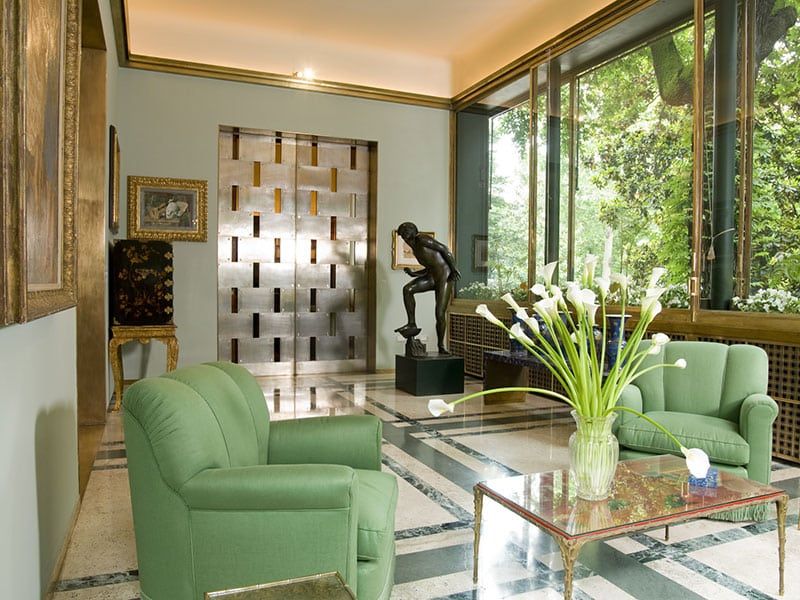
The veranda of Villa Necchi Campiglio. Photo by Giorgio Majno, © Archivio FAI — Fondo Ambiente Italiano
Intended to serve as Milan’s “It” party pad, Villa Necchi Campiglio was deliberately designed for receiving guests (and wowing them every step of the way). The veranda was often the first stop for visitors, setting the tone for wonderment and excitement of all that’s still to come. Entering through two heavy German silver sliding doors, this room elegantly echoes the materiality narrative unabashedly spoken in the foyer just steps before.
But that air of control and tailored restraint now mingles freely with the inspired views, framed in brass through double-paned glass and assuming the part of seasonal artwork in the room. The travertine floors intermix with green marble creating a simple ground weave, complementing the juxtaposed viridescent furnishings and lapis hues that keep the eye on a constant quest for discovery.
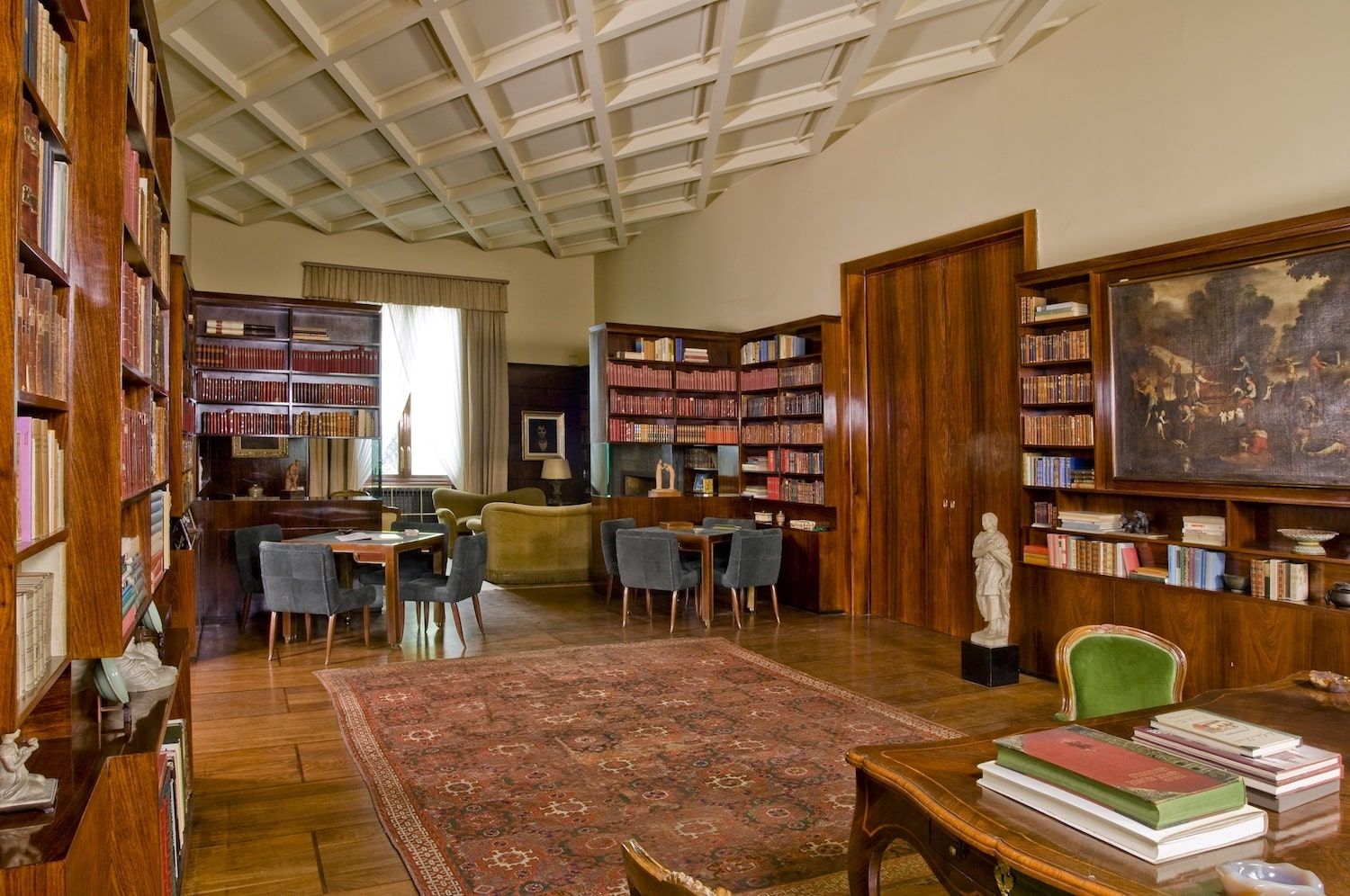
The library of Villa Necchi Campiglio. Photo by Giorgio Majno, © FAI — Fondo Ambiente Italiano
When flowing in and out of the functional assembly of rooms that follow, you’ll see some of the most significant works by early 20th-century Italian artists like Giorgio de Chirico, Adolfo Wildt and Canaletto. Most iconic to the home is Arturo Martini’s L’Amante Morta (Deceased Lover) sculpture perched in the alcove at the foot of the stairwell.
In the library, wall-to-wall rosewood bookcases are grounded by an iconic Guglielmo Ulrich games table. And, in the space even the ceiling was considered, sporting a detailed diamond stucco pattern adding another layer of interest to the room.

The salon of of Villa Necchi Campiglio. Photo by Giorgio Majno © FAI — Fondo Ambiente Italiano
Angelo Campiglio’s private study, one of the more intimate rooms of the house, displays the archetypal design applied during the mansion’s revamp in the 1950s. It also highlights the contrast between pure rationalism illustrated in Portaluppi’s original architecture with Buzzi’s more ornate, Art Nouveau design approach. Here, the walnut floors are met with wood-paneled siding (a departure from the rest of the home) alongside smaller-scaled, antique furnishings.
The same style contrast is felt in the quintessential classic formal salon decked in 17th-century lure — certainly a more expected receiving room during the time the Necchis and Campiglios inhabited the home. The opposing elements of modernity and classicism are still widely discussed today. The intrigue of these divided eras residing under one famed roof is a large part of the fascination that endures for this celebrated Italian villa.


